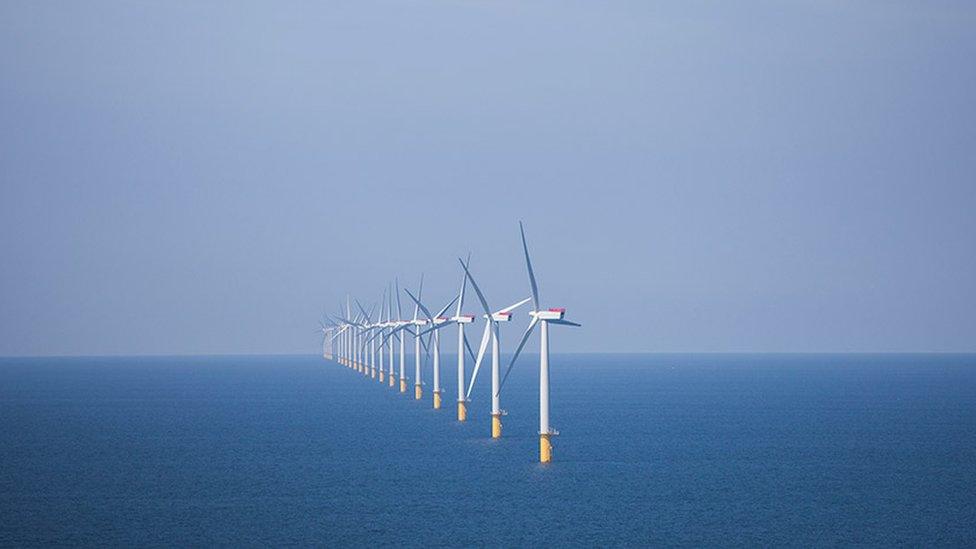Anglo-Saxon settlement found at wind farm cable site
- Published
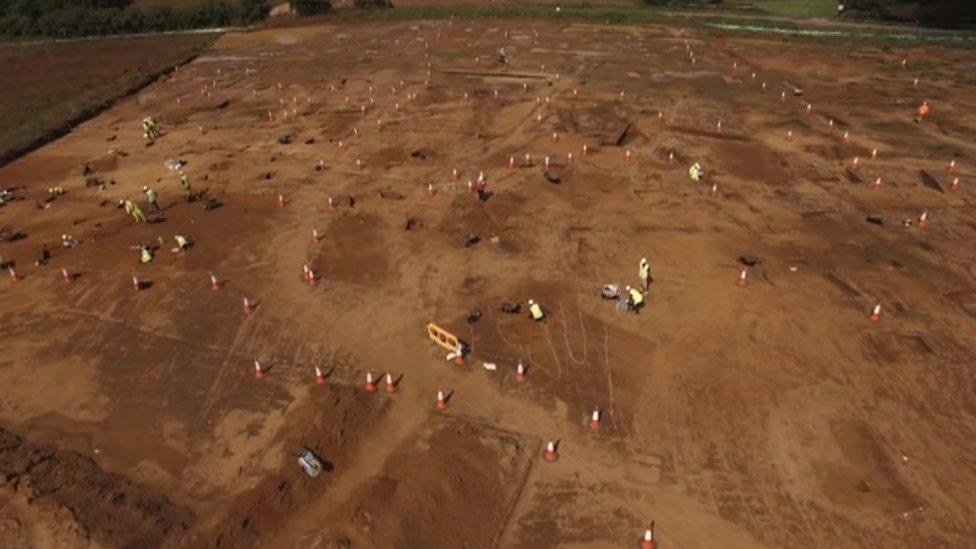
The settlement is thought to have been used for seasonal work
Archaeologists have unearthed an Anglo-Saxon settlement as part of preparation work for a £2.5bn wind farm.
East Anglia One is being built 30 miles (48km) off the Suffolk coast, with the onshore cable route running 23 miles (37km) from Bawdsey to Bramford.
There are 50 excavation sites along the route, with some 400 archaeologists working on the project.
Experts said they have discovered "many layers of activity" at the "complex" 1,500 sq m site near Ipswich.
Read more archaeology stories on our Pinterest board, external
ScottishPower Renewables, the energy firm behind the scheme, said project leaders were unable to recruit enough archaeologists from the UK and had to turn to Portugal to get more specialists.
Anglo-Saxon settlement discovered by work on windfarm
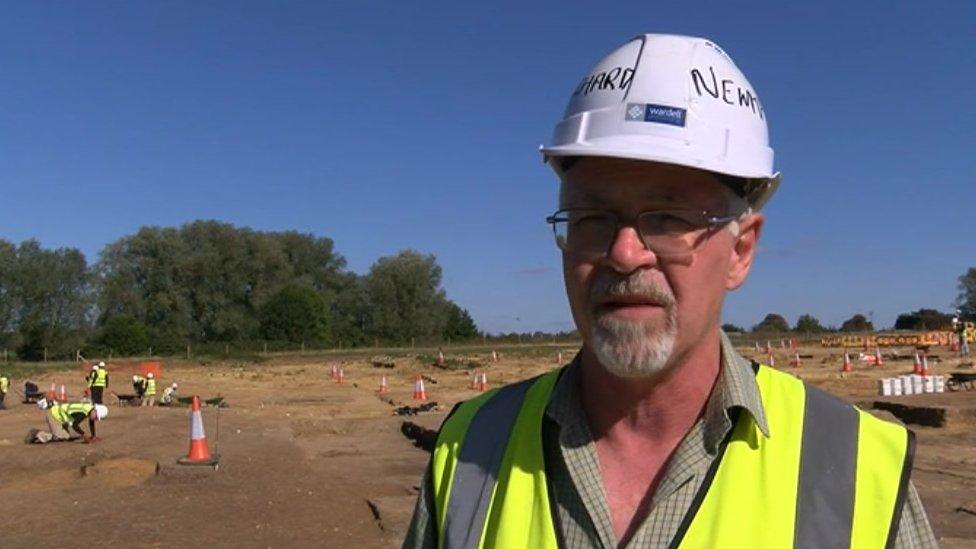
Richard Newman and his team have been working on the 1,500sqm site near Ipswich since April
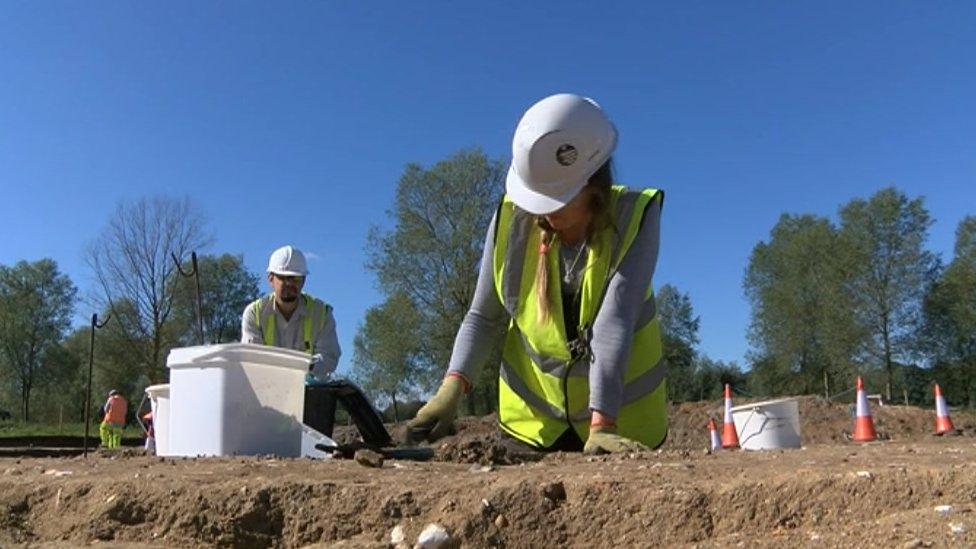
Up to 230 staff have been working on the site each week
Archaeologists have uncovered what is thought to be a bread oven, a corn drier and a broken millstone.
They think the buildings were used for seasonal work, and if the broken millstone is medieval they "can be sure" the site was occupied by the miller.
Experts have also unearthed later activity with an 18th Century quarry at the site.
Richard Newman, from Wardell Armstrong Archaeology, said the finds will be analysed further and detailed reports will be produced.
"It is safe to say we already know a lot more about Suffolk's history today than we did a year ago," he added.
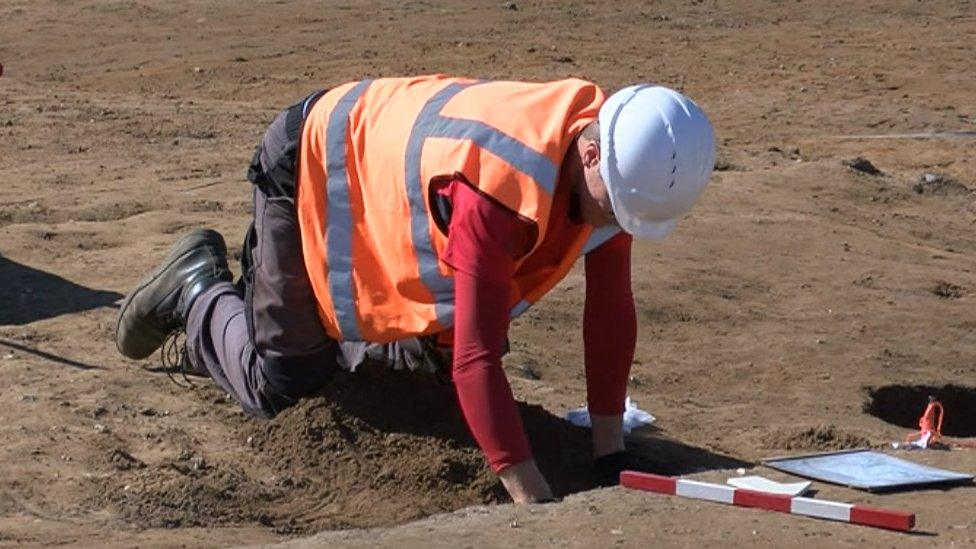
Additional archaeologists had to be recruited from Portugal
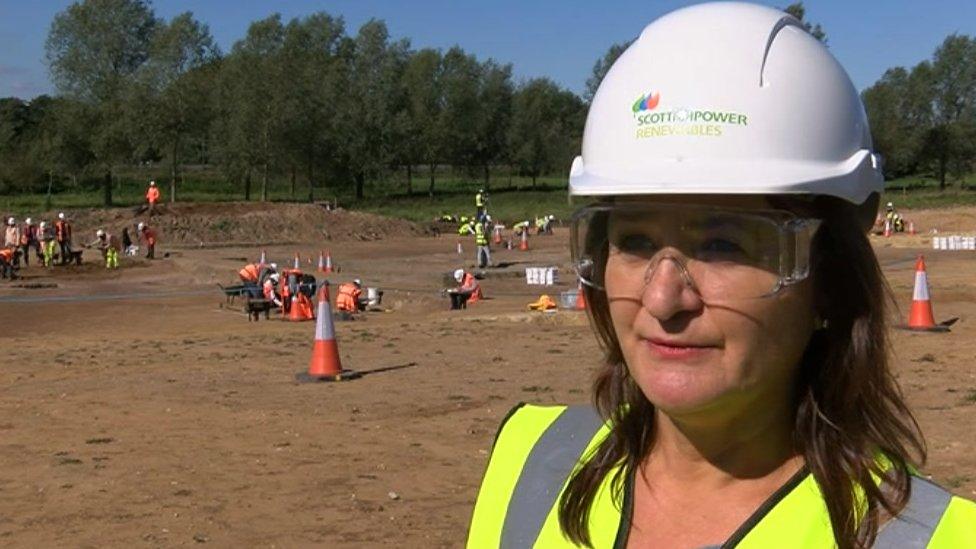
Jo Young from ScottishPower Renewables said it was "important" to carry out the excavation works
Up to 230 specialists have worked on the site each week and 20 metal detectorists have been invited to work on the project.
Jo Young, from Scottish Renewables, said: "This wind farm is about the future, new technology and carbon-free living but we have to look at the past.
"That's the beauty of it, looking into the future and into the history of Suffolk."
Cabling will be laid once the excavation work is complete.
East Anglia One will have 102 wind turbines and is due to be operational by 2020.
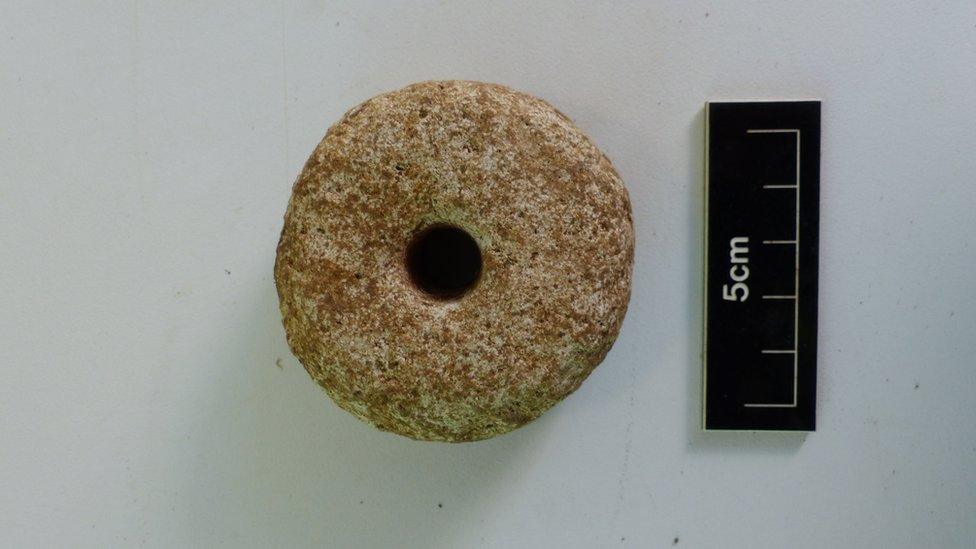
A stone spindle whorl, said to be early medieval in date, was discovered by the team

Archaeologists think an uncovered green-glazed jug was made in East Anglia
- Published24 February 2016

- Published7 August 2017
